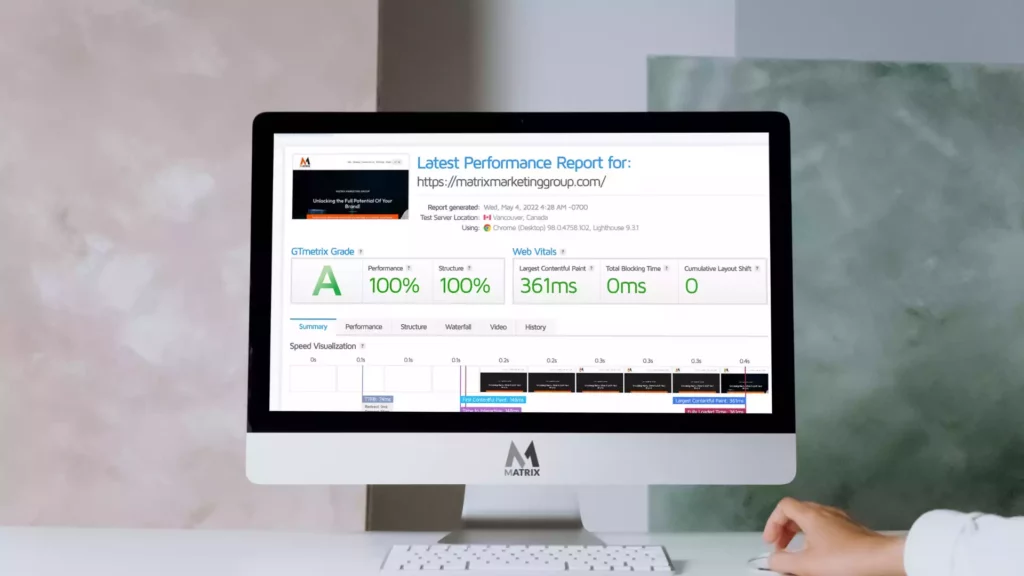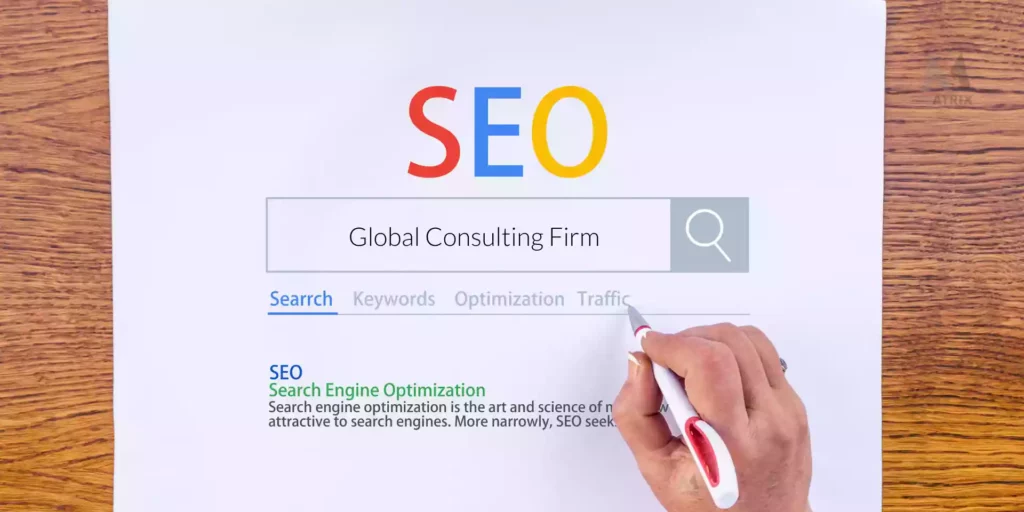5 Best Practices for an SEO-Friendly URL Structure
Want to learn how to create an SEO-friendly URL structure?
Good news – we have five best practices for you that will help improve your website’s ranking on search engine results pages.
Follow these five tips, and you’ll be on your way to an SEO-friendly URL structure!
There are a lot of factors to consider when it comes to optimizing your website for search engines. But one of the most important is your URL structure. A well-optimized URL can help improve your site’s ranking, while a poorly optimized URL can hurt your ranking.
A Uniform resource locator (URL) represents a human-readable text that identifies the location of a resource, often a web page, on the internet. The URL also assigns the manner of page retrieval, in other words, its protocol.
Three elements constitute a URL. The domain is an identifier representing the IP address of a website – DNS, domain name system, sets the rules for mapping a domain to an IP address.
Then, the protocol designates how the server and the browser communicate to retrieve a page and assigns the rules for error handling, syntax reading, security, etc.
And finally, top-level domains that represent website categorization; for instance, .edu for education, .gov for government websites, and .com for general purposes.
Besides aiding your SEO, URLs have other advantages like trust, social proof, increased social shares, and authority, impacting traffic and user engagement rates.
It is the first thing your users see, and it represents a foundation for good SEO. Lower quality URL results in lowered credibility and trust and fewer shares and traffic on a website. This article will teach some of the best practices for an SEO-friendly URL structure.
What is a URL structure?

A URL structure is the format of the web address of a website or web page. It includes the domain name, folder structure, and filename. The URL structure can affect how well a website or page ranks in search engines.
What are dynamic URLs?
Dynamic URLs change their content depending on the parameters of the URL. A URL that includes the name of a product might show different information depending on where you visit.
This can make it difficult for search engines to index your website correctly and lead to duplicate content issues. That’s why it’s important to use static URLs.
Why SEO friendly URL structure are important?

Search engine optimization (SEO) is one of the most important aspects of website design and development. Your website needs to have a strong SEO foundation to rank high in search engine results pages (SERPs). One of the simplest things you can do to improve your SEO is to create an SEO-friendly URL structure.
A well-structured URL is easy for both humans and search engines to understand. It includes the domain name, folder structure, and filename in a clear and concise format. This makes it easy for search engines to index your website correctly and helps prevent duplicate content issues.
When users can navigate your website easily, they’re more likely to stay on your site longer. This decreases your bounce rate and helps improve your SEO ranking. A good URL structure also helps users find the information they’re looking for quickly and easily.
By following these best practices, you can create an SEO-friendly URL structure that will help improve your website’s ranking on search engine results pages.
So how do you create an SEO-friendly URL structure?

Here are five best practices to follow:
1. Use keywords in your URLs
One of the best ways to optimize your URL for search engines is to include relevant keywords. By including keywords in your URL, you’re giving search engines a better idea of what your page is about, which can help improve your ranking. Just be sure to use keywords sparingly and avoid keyword stuffing, which can hurt your ranking.
Keywords are still relevant, though, as they add a description to a page’s URLs. Like in other parts of SEO, how you utilize keywords in URLs influences how efficient they are in making a page rank better.
Put yourself in the user’s shoes – does it help people understand the meaning of a page? If keywords accurately describe a page’s meaning and purpose, they’re good to go.
Every page of a website needs to have a dominant target keyword to increase its ranking.
Besides describing what the web page is about, the names of the dominant keyword should also be based on a common term that people use when looking at a page. The dominant keyword will form a part of the page’s URL – for instance, www.yourwebsite.net/subcategory/dominant-keyword.
2. Keep it short and sweet

When it comes to URLs, shorter is better. Long, complicated URLs are not only harder for users to remember, but they’re also more difficult for search engines to crawl and index.
So keep your URLs short and sweet, ideally no more than 10-15 characters.
Although longer URLs can be complicated and confusing, search engines can still process them without much trouble. However, the problem lies with usability and user experience.
According to a study, there’s a strong correlation between short URLs and high Google rankings. Besides that, pages with short URLs get shared more often on social media, driving even more traffic to your website. Make sure that your URLs only the words that are descriptive and indicate the topic of the page.
Also, make sure that your titles match your URLs whenever possible. And if you’re sticking with 50 – 60 character length for your titles, you won’t have problems with your URL length.
A good way to shorten your URLs is to remove stop words. You don’t always have to remove them, but try and use your best judgment to make your URLs as short as possible without compromising readability.
Unnecessary folders are also something you should avoid using. While there are no strict rules about folders, they will make your website easier to navigate, and improved user experience is something search engines will also value.
Neatly organized folders can help both your visitors find the content they want and search engines understand what content you think is most important.
The URL structure will remain one of the crucial factors for any effective SEO. Google’s job is to deliver relevant results to searchers and to do this, it must know what each page in its index is about.
URLs will be the first Google indexes. An intuitive URL structure makes it easier for website users to navigate a page. The dominant keyword allows them to see which category preceded the final part of a URL.
Savvy users know to delete the last few categories to return to the home page. Ultimately, what is good for the user is good for SEO.
Web crawlers have an easier time making the relevant connections between various pages on a website and efficiently sifting through information about different sections of a website and seeing how they relate to one another.
3. Use hyphens to separate words

When you include keywords in your URL, use hyphens to separate the words. This makes it easier for search engines to read and index your URL. Avoid using underscores, making it harder for search engines to crawl your site.
Domain extensions do not affect the search result rankings, except for country-code top-level domains like co.uk or com.au, and they only affect results on a geographic search level.
For instance, for a website with a com.au, or even better, a .sydney domain extension, the website will rank higher when users search for it from Sydney, hence the variations in domain name registration prices.
Although domain extensions bear no ranking significance, the user experience effects cannot be neglected.
People know about .com, .net, and .org domains and believe in the professionalism of corporations with such extensions, while extensions like .loan or .click appear spammy. Users associate them with low-ranking websites, so they will be more suspicious and hardly engage with them, which could negatively affect your SEO.
While a simple and short URL structure is most understandable for humans, there are times when a URL contains multiple words, and you have several options for how to separate them. Look at these examples:
- www.corporate.com/howtoaskforraise
- www.corporate.com/how_to_ask_for_raise
- www.corporate.com/how-to-ask-for-raise
Out of these three, which do people understand the most? Which is the easiest to read and has a clear style?
While most of us would choose the second example, search engines don’t recognize underscore as a separator and will bunch all the words together, thus ruining any previous SEO efforts.
The same applies to the first example. Besides, it is hard to read. However, when web crawlers see a hyphen, they index each word separately, while hyphens also make a URL easier to read than underscores or + sign.
4. Avoid dynamic URLs
Dynamic URLs (URLs that contain parameters or session IDs) are often more difficult for search engines to crawl and index.
If possible, avoid using dynamic URLs altogether if you must use them, including the relevant keywords in the URL so that search engines can still crawl and index your pages.
5. Use a canonical URL
A canonical URL is the preferred version of a web page, and it’s the version that you want search engines to index.
When there are multiple versions of a web page (for example, if there’s both a www and non-www version), be sure to specify your preferred canonical URL so that search engines know which version to index.
By following these best practices, you can help ensure that your URL structure is optimized for search engines. And that can lead to better rankings and more traffic for your website.
Conclusion
A well-structured URL is one of the simplest things you can do to improve your website’s search engine optimization (SEO) ranking.
By following these five best practices, you can create an SEO-friendly URL structure that will help your website rank higher in search results.
How Matrix Marketing Group can help with SEO
Matrix Marketing Group is a full-service consulting and marketing agency that can help you with all aspects of your SEO strategy, from developing keyword research to creating an effective on-page optimization strategy.
We know how to optimize your website for maximum search engine visibility, and we can help you achieve the results you need to grow your business.
If you’re interested in learning more about our SEO services, please contact us today. We would be happy to discuss your specific needs and provide you with a free consultation.
General FAQs
What is an SEO-friendly URL structure?
An SEO-friendly URL structure is easy for search engines to crawl and index. By following the five best practices outlined in this article, you can create a URL structure that will help your website rank higher in search results. Matrix Marketing Group can help you with all aspects of your SEO strategy, from developing keyword research to creating an effective on-page optimization strategy. We know how to optimize your website for maximum search engine visibility, and we can help you achieve the results you need to grow your business.
Why is it important to have an SEO-friendly URL structure?
An SEO-friendly URL structure is important because it helps search engines crawl and index your website’s pages. By following the five best practices outlined in this article, you can create a URL structure that will help your website rank higher in search results. Matrix Marketing Group can help you with all aspects of your SEO strategy.
How can you create an SEO-friendly URL structure?
There are five best practices for creating an SEO-friendly URL structure: (1) Use keyword-rich URLs, (2) Separate words with hyphens or underscores, (3) Don’t use plus signs to join words, (4) Avoid dynamic URLs, and (5) Use a canonical URL.
What are the benefits of having an SEO-friendly URL structure?
An SEO-friendly URL structure is important because it helps search engines crawl and index your website’s pages. By following the five best practices outlined in this article, you can create a URL structure that will help your website rank higher in search results.

